Take to the hills for inspiration!
(…and alpines!) Well, any excuse. So the weather looks settled and you have a hankering to head for the heights – but there are jobs to do in the garden. At first you might think there is no connection between hillwalking and gardening.

Yes, I know there is garden work to do, because there always is, but I will now present the case for not spending all the spare time in the plot.
For a start, Scotland’s hills have plenty to interest the gardener, especially the alpine plant enthusiast. High up on the slopes there are lots of flowering mountain plants to enjoy.
Plants at extremes
It’s always useful for gardeners to see the ancestors of some of today’s garden species growing at high level as Nature intended.
I remember one day high on a windy col (or bealach) high in the Breadalbane hills, coming across some common species, close cousins of those we cultivate in the garden, growing in their natural setting.
We generically tend to call them ‘alpines’ to describe this especially hardy range of plants that thrive in extreme conditions.
I recall there was thrift, not the lax and lush hummocks of the town plot, but tight wee mounds, hardly into bud. I found moss campion with tiny pink flowers, huddled in a wee patch amongst the broken stone. There were saxifrages and roseroot in the crags lower down.

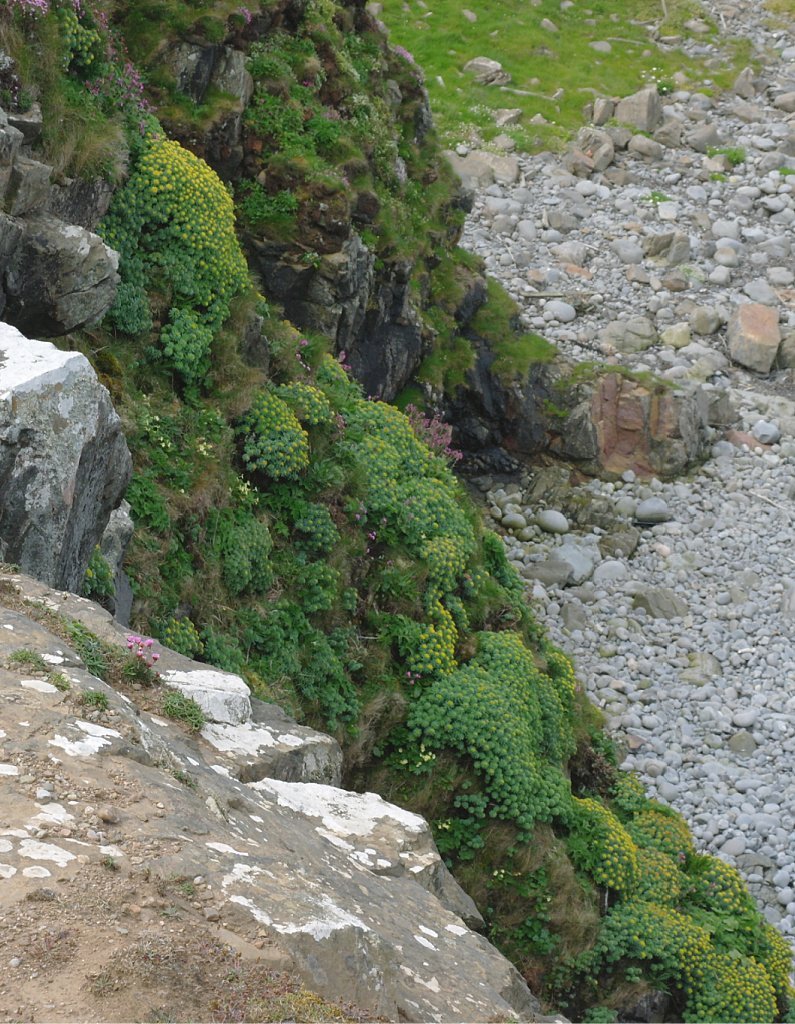
Roseroot – very curious
The bold and fleshy-leaved roseroot, Rhodiola rosea, in particular, is a curious plant. It’s very northern in its wild distribution and was known to the Vikings. They used it as a pick-me-up – a kind of Norse ginseng – though how a macho Viking was able to admit that all that pillaging wore him out is another story.
You can even buy it in supplement form for its wholesome properties. Meanwhile some foraging books say you can make sauerkraut with its young leaves. Presumably if you run out of cabbage; or if really wanting to go off-grid.
Mountain top or sea-coast
Anyone thinking about growing alpines can learn a lot by seeing how our native species grow under the extreme conditions.
Talking of extreme conditions, when you think about it, it shouldn’t be surprising to find species like thrift or roseroot growing both by the shore and high on the mountains of Scotland. After the last Ice Age, plants like these, tolerant of harsh conditions, covered the land.
As the climate warmed, they were pushed to the edges where things were still tough and there was less competition – and that meant either down to the exposed coastline or up to the windy hilltops.
To be honest, I’ve also just written that to justify using some pictures taken along the coast of species also found on the tops!
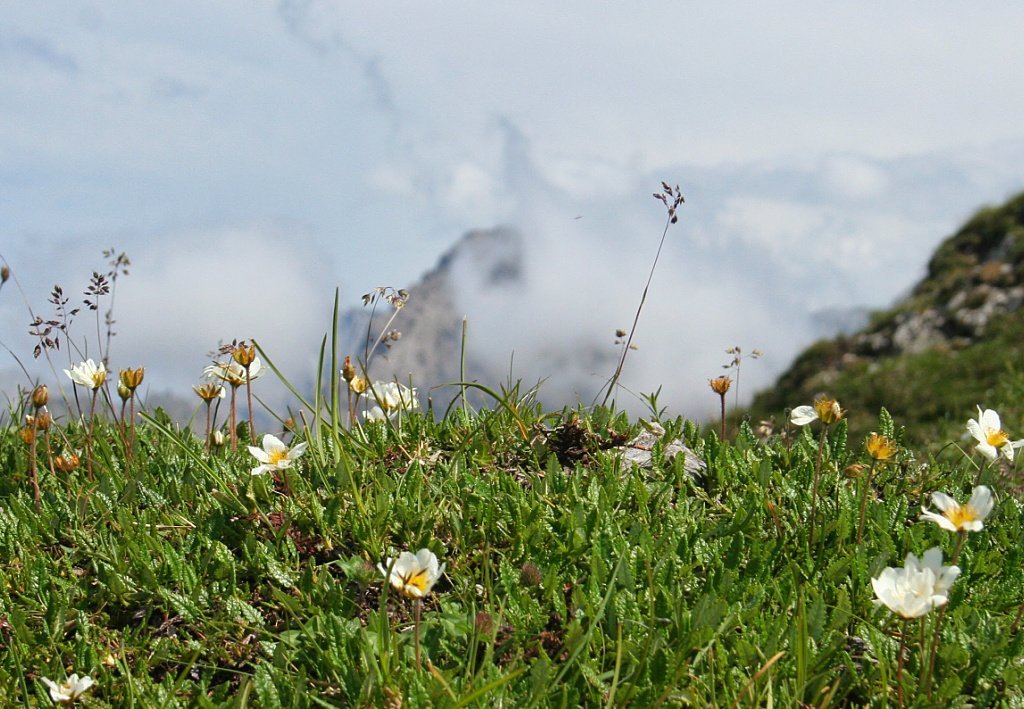
Good drainage – the secret for alpines
First of all, the advice you always hear about good drainage for alpines is very important.
In the wild, many alpines thrive amongst scree and broken, frost-shattered rocks, with thin or virtually non-existent soil and rainfall running away very quickly.
Then there is the exposure. No overhanging trees or shade for them. Crouched between the rocks up there, they look up to the sun.
Our own mountain avens, Dryas octopetala, a super wee plant with creamy-white petals even follows the sun round, turning its cup-shaped flowers like miniature satellite dishes to focus a warm spot on the stamens in the centre. That’s for the benefit of pollinating insects.
‘Base rich’ – good and limey
The kind of rock is important, too. Limestone or ‘base-rich’ rocks, such as you find, say, on Ben Lawers near Killin or up by Inchnadamph in Sutherland are enjoyed by the greatest variety of species, mountain avens amongst them.
No point in trying to grow the alpine specialist nursery version amongst acid peat.
So if you’re keen to try alpines, give the setting some thought. Obviously, harsh conditions aren’t a problem. They don’t mind wind.
If you can’t guarantee good good drainage at natural soil level then think about a raised bed.

Some gardeners add a top dressing of stone chips to help with drainage and make the arrangement look really tidy.
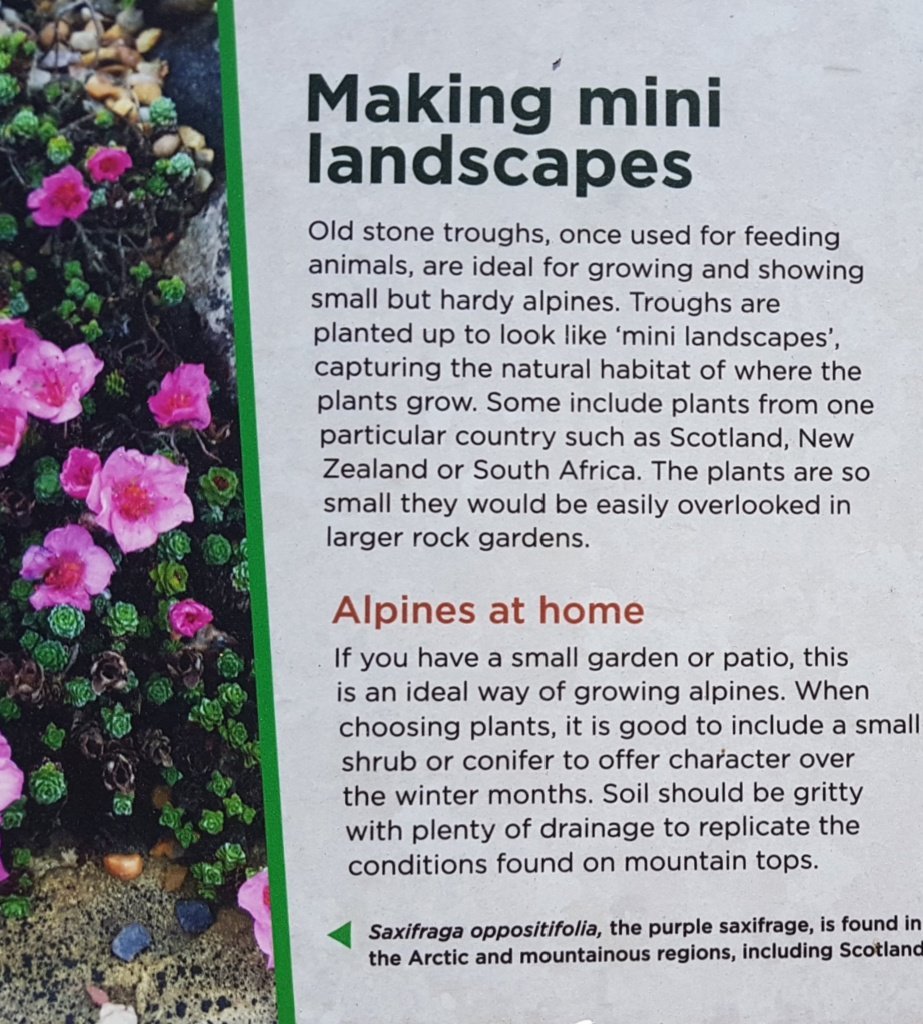
(Above.) ‘The Botanics’, Edinburgh – a good place to see a variety of alpines, many in smaller troughs and containers. Note the mauve of purple saxifrage (left side). This is a wee delight in spring, whether on the patio or high in the Scottish hills.
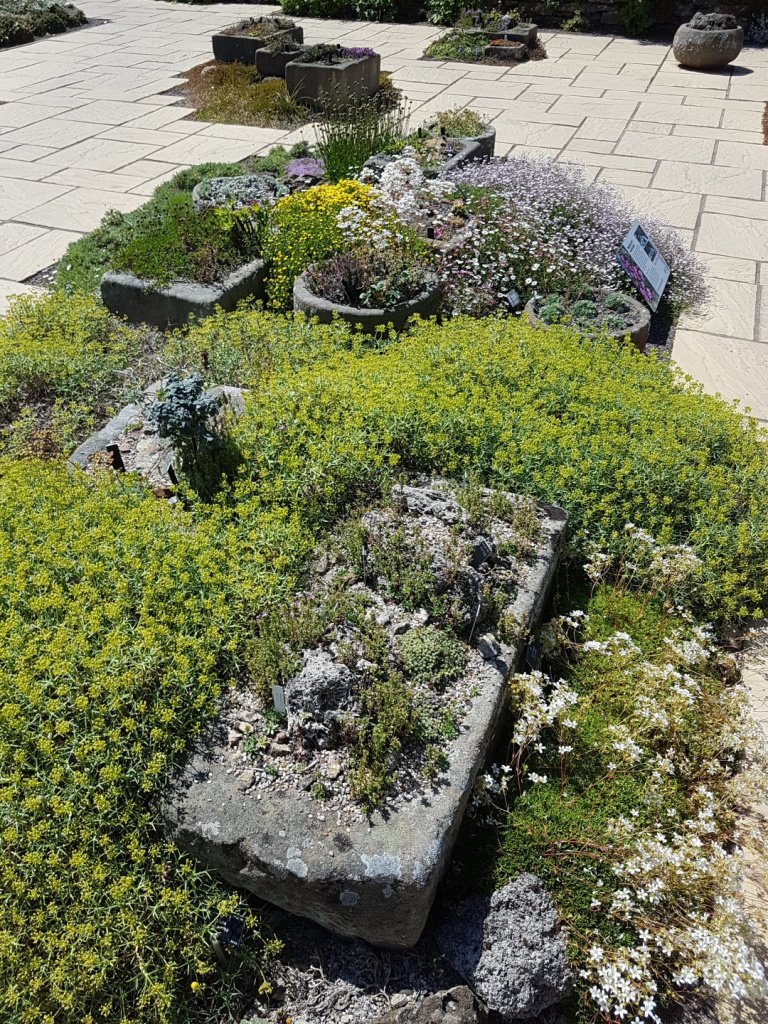
This is sometimes taken one stage further as a scree garden, though as any hillwalker will tell you, the last thing you find as scree are wee chips all the same size.
In the most realistic scree garden I ever saw, the owner had created lots of planting sites by bashing up sandstone rocks with a hammer!
All the different sizes of flakes and larger chunks looked much more like natural weathered rock than the sort of chippings more suited for paths. But, hey, perhaps that’s a detail…
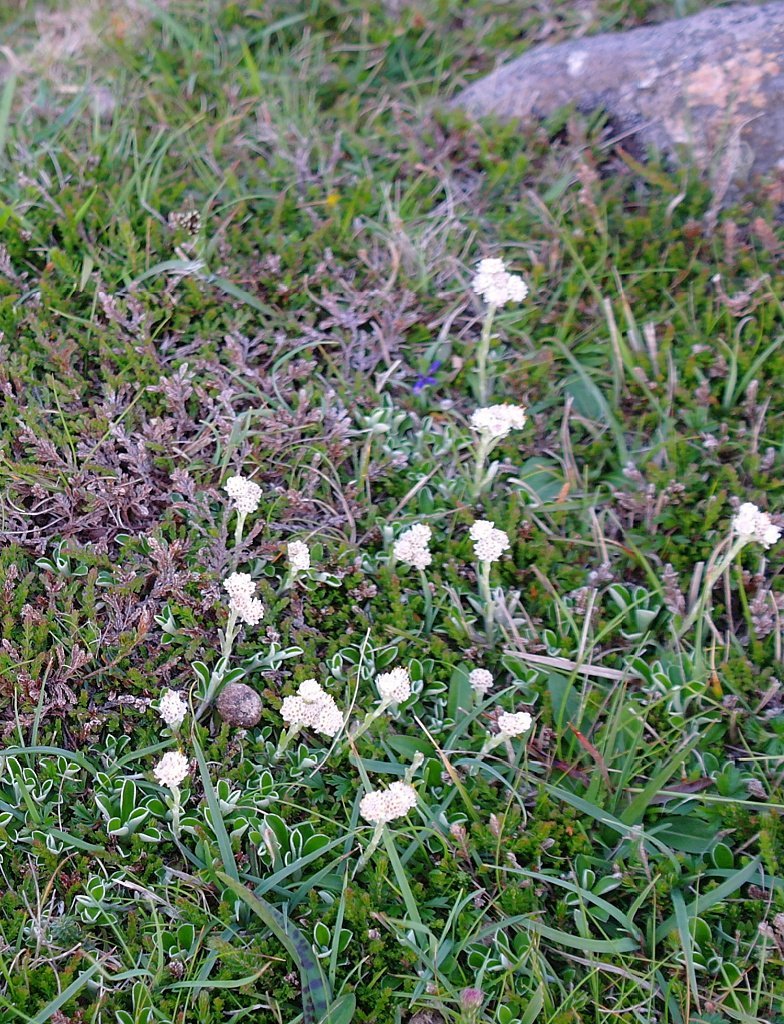
Don’t let your alpines be overwhelmed
Lastly, there is the important sense of scale. Certainly, there are plenty of rampant species you can buy. You can carpet the rock garden almost overnight with certain vigorous but minute veronicas or some of the campanulas, mentioned elsewhere, probably as ‘garden hooligans’.
But small alpines can so easily be overwhelmed – which is why they look good in troughs where vigorous competition is kept away.
Back at the top of the mountain, the Antennaria with its silvery grey leaves hugging the ground, the mossy cyphel with tiny yellow stars creeping round the rock splinters are little gems half-lost in a wild place.
Hypertufa – if you must
Finally, I got to the end of this page on alpine plants for the garden without once mentioning the word ‘hypertufa’. This is a magical substance that really, really keen alpine gardeners use to make troughs from.
By way of warning, the ingredients for hypertufa include cement, sharp sand and/or vermiculite, coir, chicken wire, and two forms, possibly of wood or cardboard, so you can pour the resultant horticultural custard in between to make the finished box-shape.
A wire brush, mixing container, protective clothing, eye-protection and a safe prep area also come into recipe. You also need a good variety of swear words and be prepared to justify the mess. In short, it’s a complete slaister, which is Scots for mess. Oh, and then you paint the finished article with yoghurt or horse-muck. Or you buy a ready-made container.
There is also a discussion about container gardening on that link on this site if you want to stick around. And you know I’d like you to…
